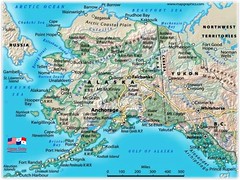Tangled: Marine Debris and the Stellar Sea Lion

Spencer (blog author). 2017. Marine debris and entanglement of the stellar sea lion. Infographic. Data source: Raum-Suryan, Jemison, and Pitcher. (2009).
The steller sea lion (Eumatopias jubatus), is a species of sea lion native to the Pacific Ocean and oftentimes found off the cost of Alaska. The steller sea lion, or SSL, was put onto IUCN red list after a dramatic drop in population sizes. The drop was 80% of the total population over the course of 30 years, a very extreme decline from most likely multiple causes. However, one such cause has been identified in speeding up the process, Marine Debris.

“Marine Debris” (CC BY-NC 2.0) by benloudman
As seen above, a lot of the trash and debris in the oceans are fibrous and can tangle easily. This makes for the possibility of the entanglements of the seals. During a boat based survey, 325 individual SSL’s were studied and had some sort entanglement, or obstruction due to the debris. The numbers show that 49% of the population had a form of entanglement around the neck of the sea lion, had ingested some form of debris such as fish hooks, and the last 1% had a microfilament wrapped around a tracker either on the head or body of the sea lion.
“#AunqueUstedNoLoCrea: ¡Costas de Alaska” (CC BY-ND 2.0) by U.S. Embassy Panama
Shown above is Alaska, one of the main breeding grounds for the SSL being right off the coast of Juneau, Alaska. With the data learned and gained from the scientists that have been studying the SSL, it can be gained that much of the population decrease has been due to the marine debris.
One of two things can being going on with the debris. The debris could be entangling the neck and body of the sea lion, and causing distress, slowing down the sea lion, and overall hurting it. The other main possibility is if the SSL ingests an item. Oftentimes the ingested item can be caught in the oesophagus and cause irritation. This irritation will cause the SSL to hunt and feed less, which will in turn lead to lessened health and can eventually cause starvation if left long enough.
Out of all this, all that can be done, is to minimise waste that can make its way into the ocean, and hope that it doesn’t make it to the steller sea lions.
Works Cited:


Spencer, thank you for highlighting this important cause of trauma to Steller sea lions. As a veterinarian at The Marine Mammal Center in California, we too often see that our patients are affected by marine debris – in particular fishing line entanglements. You finish with a great point at the end that this trauma is completely due to humans, and the way to stop it is to reduce the amount of trash that goes into our oceans. Thank you for sharing this message with readers. I hope you get to visit the Stellers in Alaska one day. They are amazing!